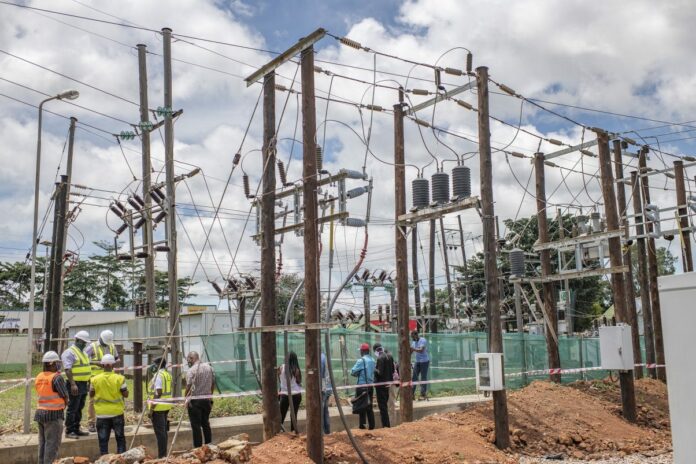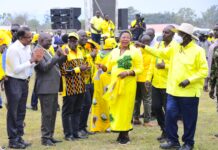By URN
Former Energy Minister, Irene Muloni has tasked her predecessor to explain why most sub counties in the country don’t have access to the national electricity grid. Muloni, an Electrical Engineer was the Minister of Energy Minerals until 2019 when she was dropped by President Museveni.
Ruth Nankabirwa was appointed to replace her.
She was at the Ministry when the government secured a $212 (763 billion) loan from the Exim Bank of China to extend electricity to sub counties.
The government was to inject $13 million as counterpart funding. Local suppliers were expected to inject in $36 million for supplying poles and electric wires. The project is being executed by M/s TBEA Co., Ltd, a Chinese company with the help of 45 local subcontracting firms contracted. It is under the Uganda Rural Electricity Access Project (UREAP).
Muloni during a debate in Parliament said many of the sub counties in the country are not connected to the electricity grid yet the money was released to the contractor. She said the local suppliers to the project have also been frustrated
Muloni was part of the Ministers of energy who over saw some of the reforms in the electricity sector including initial preparations for the Bill, later the Electricity (Amendment) Act, 2022.
She warns the Uganda Electricity Generation Company Limited is bound to fail after the end Umeme concession. Muloni’s concerns were shared by the Speaker in the Chair, Thomas Tayebwa during the sitting on Tuesday. “I asked many times here. I want to know one transformer it did” said Tayebwa.
Ruth Nankawbirwa was not in the House when the matter was raised. State Minister for Energy Okasai was present, but he did not provide an update about the project.
The project was aimed at expanding electricity access to rural areas. It involves constructing new grid infrastructure, including medium and low voltage networks, and connecting households, public institutions, and businesses. It is under the Bridging the Demand-Supply Gap through Accelerated Rural Electrification Programme (BDSGAREP),
It was planned to be implemented in 5 phases. The 1st phase included the official project Launch Schemes that were selected to achieve visibility in relatively less served districts.
The second phase included shorter schemes that can be quickly commissioned to increase project visibility in order to achieve, in a short time, a higher percentage of administrative centers connected and manage public expectations.
Phase three included the longer lines that would require more resources and time while the rest include schemes that are planned to interconnect with lines that are to be constructed by other Rural Electrification Agency projects funded by the World Bank under Energy for Rural Transformation (ERT III) and the African Development Bank (AfDB) under Uganda Rural Electricity Access Project (UREAP).
The overall plan was to ensure that all lines for which construction was completed are commissioned within the shortest time possible and handed over to the respective Service Providers for management and commencement of implementation of customer connections.



